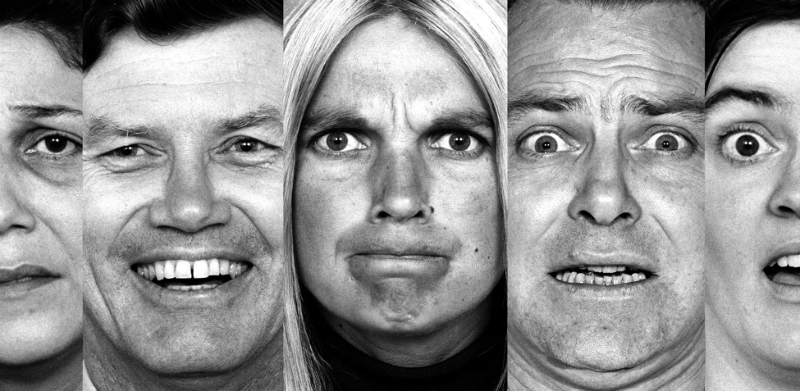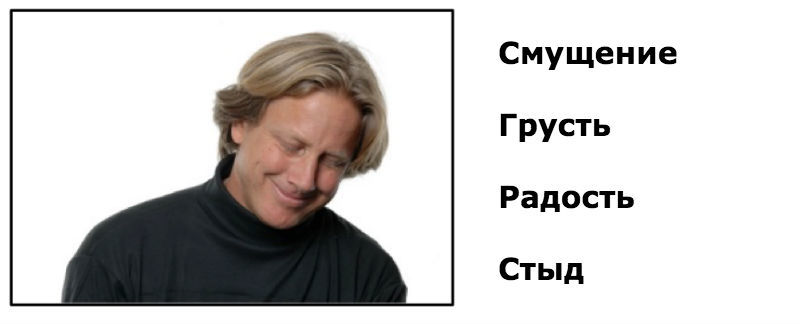How to recognize a person's emotions in his face: A test for employees of financial companies

For two years, the Dutch bank ING has been implementing a program that aims to increase the “emotional intelligence” of employees. It is often difficult for people to immediately recognize the emotions of the interlocutor, which can lead to a deterioration in the quality of communication with clients and colleagues.
Efforts bring results - as Business Insider writes , despite the fact that ING money bonuses are lower than the industry average, according to surveys, employees are, on average, more satisfied with their work. In addition, revenues are also growing faster than the industry average, with 80% of additional income accruing to current customers.
')
A program to enhance emotional intelligence includes many different aspects. The most important thing here is to learn to recognize the emotions of another person. In order to do this, a financial company offers employees a special test. It consists of an image of a person and four possible answers. Let's try to go through it (after the picture there is a spoiler with the answer, and then its description).
What emotions does a person in the picture feel?

Answer:
Contempt
“People often confuse contempt with disgust. But in the latter case, the upper lip is usually raised, and a wrinkle appears on the nose. Disgust arises in relation to something bad, and not when a person scoffs at something or suspects something. ”

Answer:
Disgust
“People often confuse disgust with anger. But in the latter case, the eyebrows of a person fall and the lips tighten more and the upper eyelid of the eye rises. In case of disgust, on the contrary, the mouth opens and the tongue appears, as if nausea. ”

Answer:
Coquetry
“Here we see a shy but flirtatious smile. It is possible to understand that a person is flirting, if his or her head turns to the side, as if telling “you're not interested in me”, but at the same time eye contact is maintained. This is a universal sign of the duality of coquetry - a person simultaneously avoids and provokes contact with another person. ”

Answer:
Pain
“When we feel pain, the facial muscles contract. The muscles around the eye contract in the upper part of the face, causing the effect of “squinting”, eyebrows are also lowered. In the lower part of the face, the lips tighten and move forward. ”

Answer:
Compassion
“When a person feels sympathy or compassion for someone, a wrinkling eyebrow lifts them, lips tighten, and the head slightly moves forward is a sign of involvement.”

Answer:
Joy
“With a sincere smile, the muscles relax. A person looks open and relaxed - in moments of joy, we want to interact with people, not to defend ourselves from them. ”

Answer:
Surprise
“Some experts believe that in moments of surprise a person opens his eyes wide - an unexpected meeting with a friend who has not been seen for a long time, a sudden reward - we are trying to“ absorb ”as much of this new information as possible.”

Answer:
Pride
“Pride is associated with signs of excellence. The corners of the lips rise slightly, signaling that the person is pleased. But unlike the actual joy, the head tilts back, and the selection is torn up. These are classic signs of a sense of power and superiority — the people who send them feel their power. ”

Answer:
Embarrassment
“When people are confused, they tilt their heads to the side and down, opening the neck. An embarrassed smile is also different from the usual: lips are compressed together, this is a manifestation of restraint. ”

Answer:
Anger
“Such muscular movements of the lips and around the eyes and eyebrows suggest that a person is aggressive, reacting to a threat or upset. Researchers believe that this happens later, that such muscle movements can physically protect the face during a conflict — for example, reduced eyebrows protect the eyes. ”

Answer:
Happiness
"This is a classic sincere smile, which is also called the Duchene smile - it expresses happiness."

Answer:
Fear
“The expression on the face of fright is often confused with surprise. But in the latter case, the eyes of a person open up harder and the lips do not “separate” to the sides, as in this photo. On the contrary, the mouth opens. In addition, the moment of fright eyebrows practically do not move, and in case of surprise, they rise. "
According to Business Insider, a financial institution using this test does not evaluate its employees with it. It is designed to make people think about the importance of emotions and their recognition. This allows them to better understand other people, for example, customers - and this already translates into increased business profitability.
And how many correct answers did you give? Share in the comments and do not forget to subscribe to our blog !
Source: https://habr.com/ru/post/390503/
All Articles